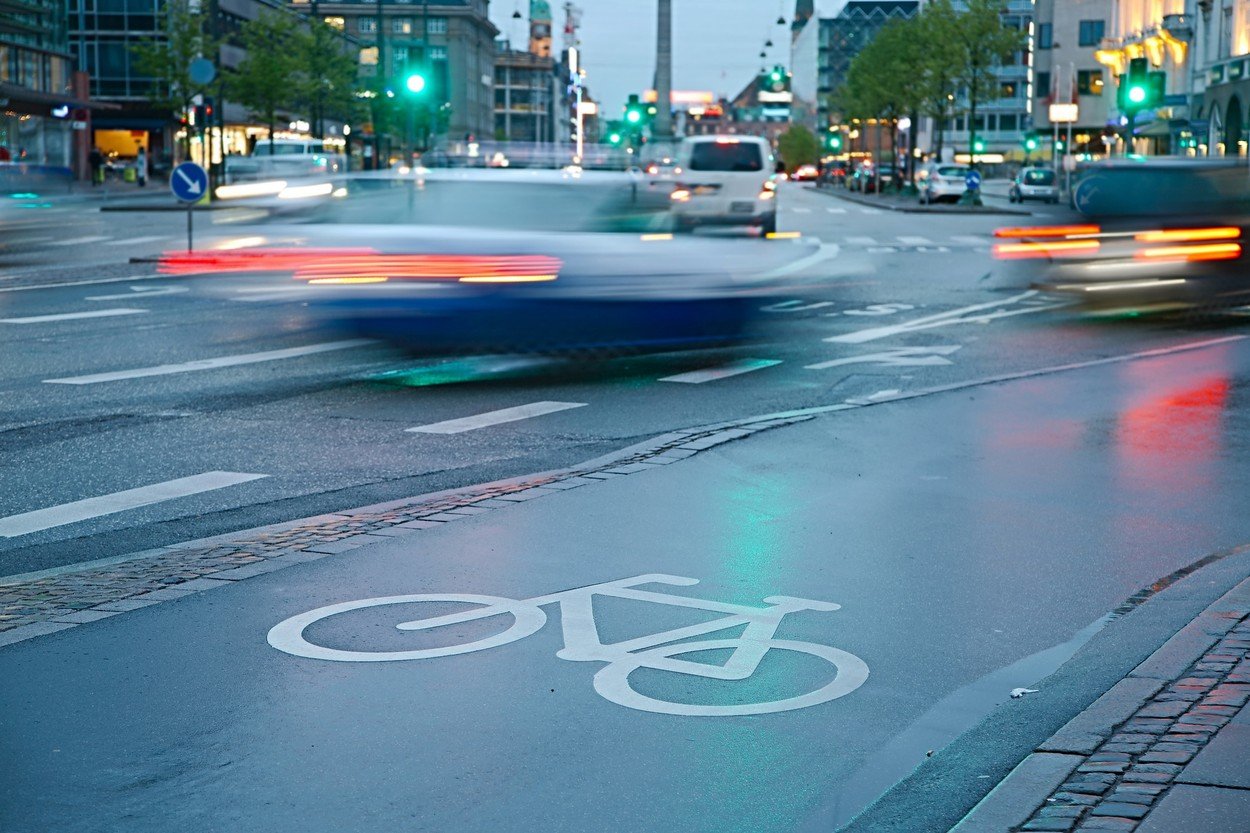Researchers at the University of Colorado, Denver, and the University of New Mexico looked through 13 years of data from 12 large cities in the United States with a lot of cycling, including Oklahoma City, Memphis, Kansas City, Dallas, Houston, Austin, Chicago, Denver, Seattle, San Francisco, Minneapolis, and Portland and investigated over 17,000 fatalities and 77,000 severe injuries. During those years, the U.S. saw a 51 % increase in bicycling to work and the number of protected bike lanes double each year starting in 2009.

Cities with more cycling are safer
The study found that bike facilities act as “calming” mechanisms on traffic, slowing cars and reducing fatalities. Between 1990 and 2010, Portland’s bicycle share increased from 1,2 % to 6 % and the road fatality rate dropped by 75 % over the same period. With added bike lanes, fatal crash rates dropped in Seattle by 60,6 %, San Francisco by 49,3 %, Denver by 40,3 %, and Chicago by 38,2 %.
“Bicycling seems inherently dangerous on its own,” said study co-author Wesley Marshall, PhD, PE, assistant professor in the College of Engineering, Design and Computing at CU Denver. “So it would seem that a city with a lot of bicycling is more dangerous, but the opposite is true. Building safe facilities for cyclists turned out to be one of the biggest factors in road safety for everyone.”
Focusing on cycling infrastructure is the key
Originally, it was believed that an increase in cyclists would lead to a “safety-in-numbers” effect which would make drivers more likely to slow down and be aware of their surroundings. This research found that it’s not the number of cyclists, but rather the infrastructure built for them, like separated and protected bike lanes, that do the job. It found that bicycling infrastructure is significantly associated with fewer fatalities and better road-safety outcomes.
https://www.youtube.com/watch?v=NAr5sB6aivk
The study co-author, Nicholas Ferenchak, PhD, assistant professor in the Department of Civil, Construction and Environmental Engineering at the University of New Mexico, hopes this study simplifies the ways in which cities move forward. He said:
“When we believed it was the old safety-in-numbers concept that meant we had to figure out how to get more people on bicycles to make a city safer. That’s not easy. But this research has boiled it down for city planners: create cycling facilities, and you’ll see the impact.”




